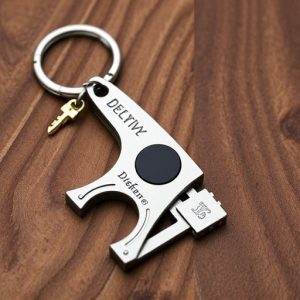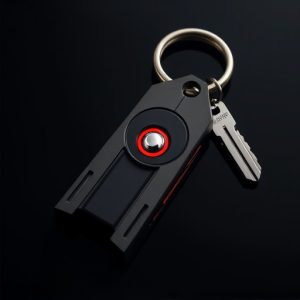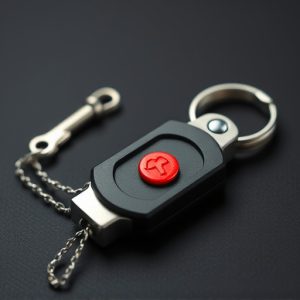Designing Compact Keychain Defense Tools: Efficiency, Durability, and Safety
Compact keychain defense tools have gained popularity for discreet self-defense, relying on the Prop…….
Compact keychain defense tools have gained popularity for discreet self-defense, relying on the Proper Keychain Striking Form Technique for their effectiveness. This technique leverages wrist and arm movements to deliver powerful strikes with minimal training. The design focuses on portability, durability (using materials like stainless steel or titanium), ergonomic grip, and intuitive deployment mechanisms. Safety is paramount; users must master the technique and understand local regulations regarding self-defense tools to ensure responsible use while adhering to legal limits.
“Unveiling the power of compact keychain defense tools, this comprehensive guide explores their design intricacies. From ‘Understanding Compact Keychain Defense Tools’ to ‘Safety Considerations’, we demystify these versatile devices. Learn about the art of ‘Proper Keychain Striking Form: Technique and Efficiency’, a crucial aspect for maximum effectiveness. Discover how material choices impact durability and explore ergonomic designs for effortless use. Understand legal implications, ensuring you’re informed when carrying a valuable self-defense asset.”
- Understanding Compact Keychain Defense Tools: A Brief Overview
- The Art of Proper Keychain Striking Form: Technique and Efficiency
- Choosing the Right Materials for Durability and Reliability
- Designing for Ease of Use: Ergonomics and Functionality
- Safety Considerations and Legal Implications: What You Need to Know
Understanding Compact Keychain Defense Tools: A Brief Overview
Compact keychain defense tools have gained popularity as a practical and discreet self-defense option, especially for individuals who prefer to be prepared without drawing attention. These tools are designed to fit comfortably on a keychain, combining portability with effectiveness. The core of their design lies in mastering the proper keychain striking form technique. This involves using the weight and momentum of the keychain to deliver powerful strikes, enabling users to defend themselves against potential threats.
By understanding and practicing the keychain striking form, individuals can ensure their defensive actions are both efficient and precise. It encourages users to utilize the entire length of the keychain, leveraging their wrist and arm movements for maximum impact. This technique is particularly useful in close-quarters situations, allowing for quick and effective self-defense without requiring extensive training or physical prowess.
The Art of Proper Keychain Striking Form: Technique and Efficiency
The design of a compact keychain defense tool isn’t just about portability; it’s also about mastering the art of proper keychain striking form. This technique involves understanding the efficient use of space and the precise application of force. By adopting a streamlined striking form, users can maximize the potential of their keychain tool, ensuring each strike is effective and controlled.
Proper keychain striking form technique revolves around positioning, grip, and body mechanics. Users should hold the tool with a comfortable yet firm grip, aligning their wrist and forearm for optimal leverage. This allows for more control over the strike, enabling users to target specific areas of an assailant’s body without causing unintended harm or injury. Efficiency comes from practice and precision, where each movement is deliberate, minimizing energy wastage and maximizing impact.
Choosing the Right Materials for Durability and Reliability
When designing a compact keychain defense tool, selecting the appropriate materials is paramount for ensuring durability and reliability. The key components should be chosen based on their strength-to-weight ratio, corrosion resistance, and impact absorption capabilities. High-quality metals like stainless steel and titanium are popular choices due to their exceptional resilience against wear and tear. These materials also maintain their structural integrity over time, even under extreme conditions.
The proper keychain striking form technique leverages the chosen materials’ strengths. A well-designed striking surface should be flat and impact-efficient, allowing for precise control during use. This ensures that each strike is maximally effective while minimizing the risk of tool damage or user injury. The handle should also ergonomically fit the hand, enabling secure grip and easy manipulation for reliable performance in various situations.
Designing for Ease of Use: Ergonomics and Functionality
When designing a compact keychain defense tool, ease of use is paramount. The ergonomic design should prioritize comfort and control, ensuring that users can effortlessly access the tool when needed. A well-balanced weight distribution and a grip that fits snugly in the hand are essential components. The tool’s functionality should be intuitive; the mechanism for deploying and retracting the tool must be seamless and require minimal effort. This involves incorporating features like easy-to-operate switches or levers, ensuring users can quickly activate the defense mechanism using just one hand.
The proper keychain striking form technique refers to the way the tool is held and used during self-defense scenarios. It should allow for precise and powerful strikes while maintaining stability. Through careful design, the tool can be crafted to fit naturally in a user’s hand, enabling them to execute effective defense moves with minimal training. This focus on ergonomics and functionality ensures that the compact keychain defense tool serves its purpose efficiently and effectively.
Safety Considerations and Legal Implications: What You Need to Know
When designing a compact keychain defense tool, safety should always be the top priority. Users must be trained on the proper keychain striking form technique to ensure minimal risk of injury during self-defense scenarios. This includes understanding the appropriate range, angle, and force required for effective use, while avoiding strikes that could cause unnecessary harm or permanent disability. The design itself should incorporate features like impact-absorbing materials and precise locking mechanisms to prevent accidental deployment.
Legally, the carriage and use of defense tools are subject to varying regulations depending on your location. It’s crucial to research and comply with local laws regarding self-defense instruments, such as keychains. This involves understanding what constitutes legal self-defense, the restrictions on weapon possession, and any registration or permit requirements. The proper keychain striking form technique should also be used in conjunction with a thorough knowledge of these legal implications to ensure that your actions remain within the bounds of the law while protecting yourself or others effectively.
Compact keychain defense tools, when designed with an understanding of proper keychain striking form technique, durable materials, ergonomic functionality, and safety considerations, can be powerful and practical self-defense options. By mastering the art of efficient striking and navigating legal implications, individuals can empower themselves with a reliable personal security device that fits conveniently on their keys.


